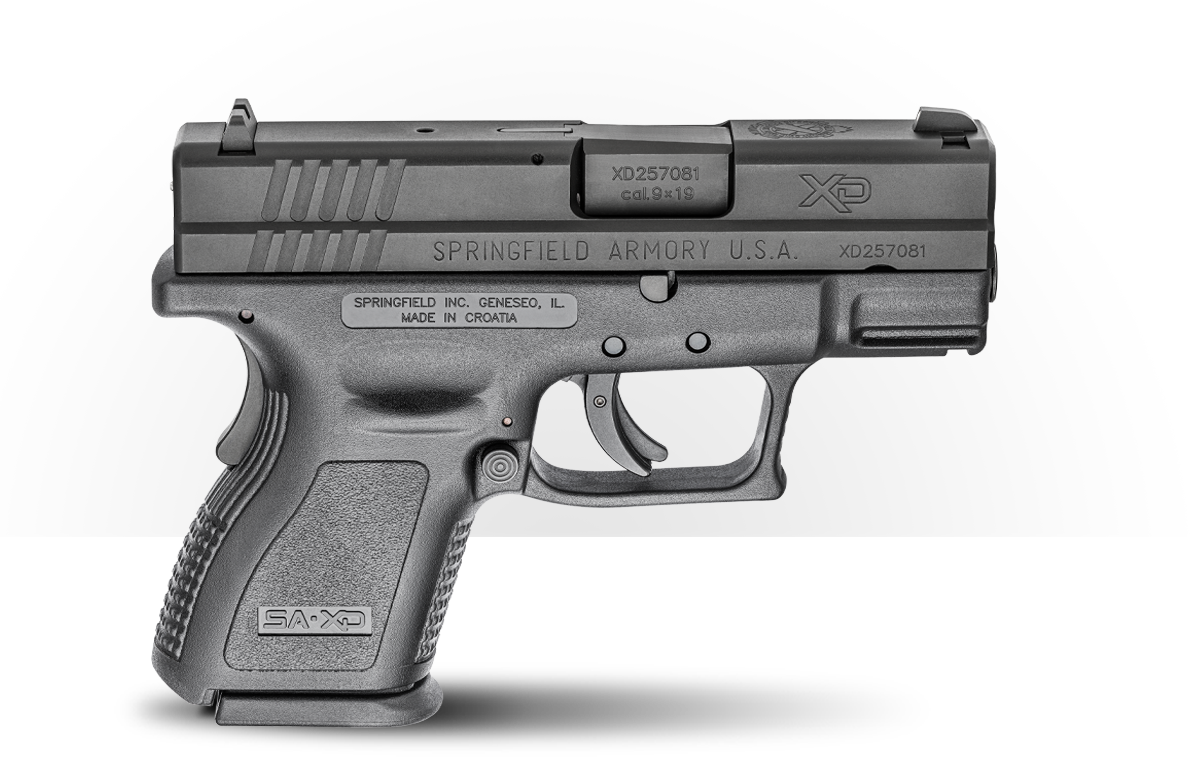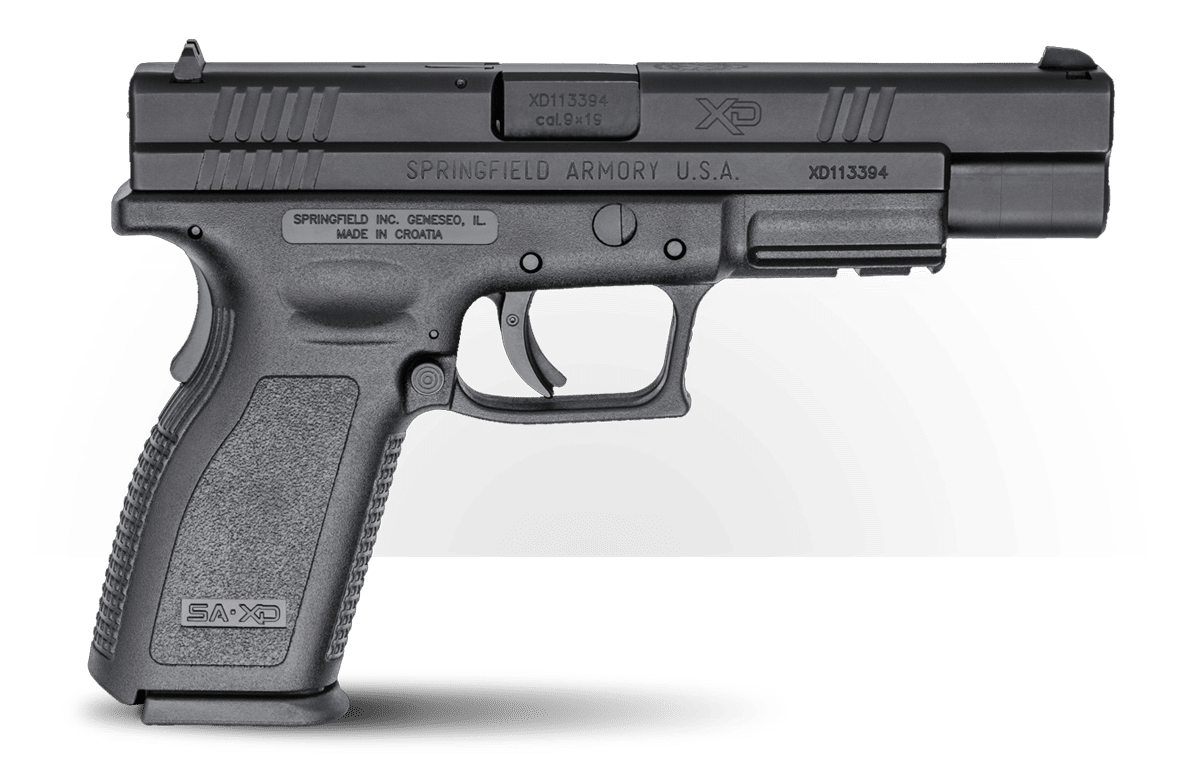Springfield XD Sub-Compact 3″ vs. Springfield XD Tactical 5″
February 12th, 2024
7 minute read
The first-time buyer and the experienced shooter are equally vexed by one question: “What gun should I buy?” We live in an age where we have not only a bewildering amount of excellent platforms from which to choose, but one in which a majority of those platforms are available in a multiplicity of mission-specific configurations.
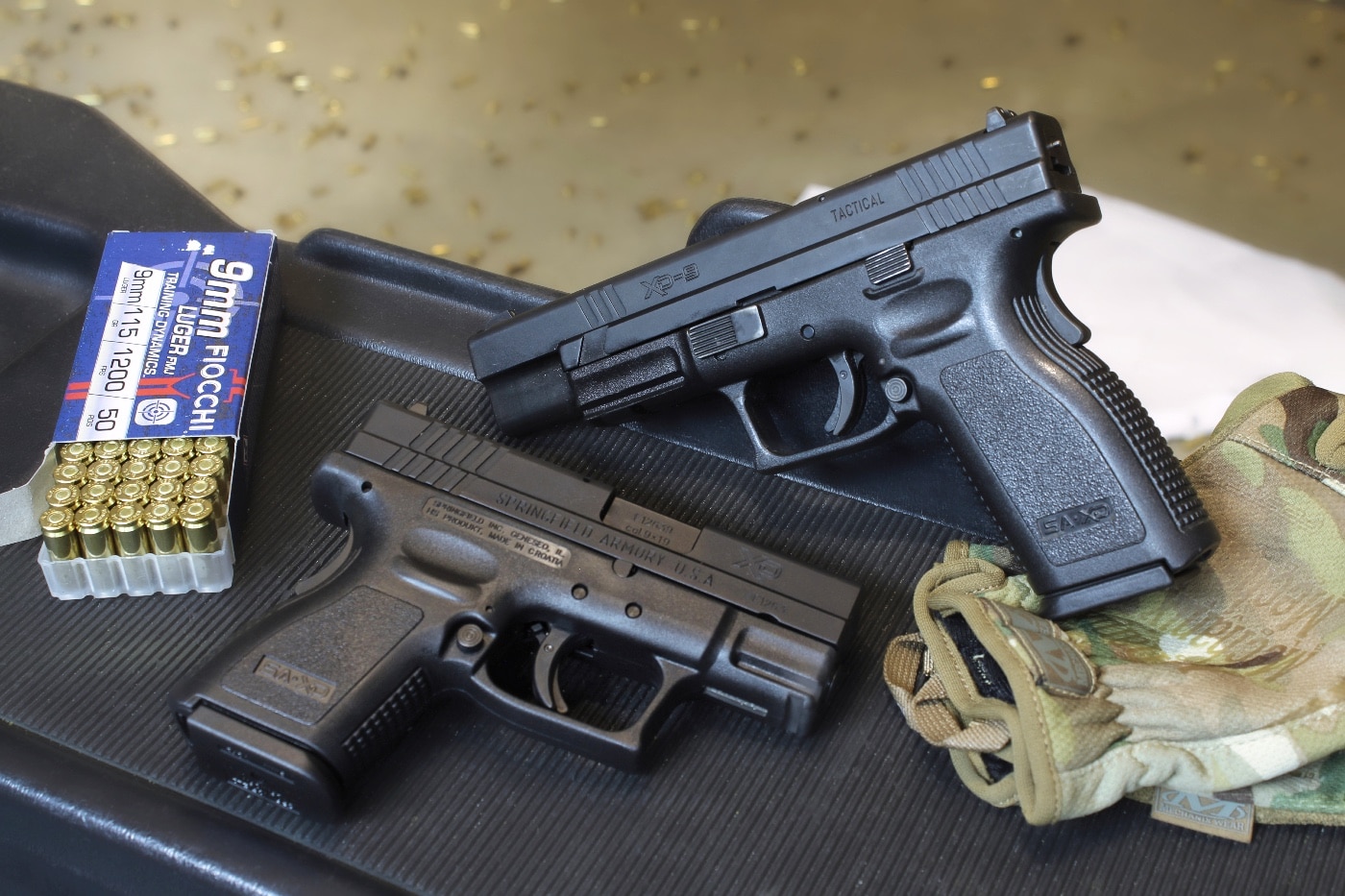
Where handguns are concerned, you’ll often find a great number available in a standard configuration, a “tactical” or competition-inspired package (often with a longer barrel) and a sub-compact model. While these choices theoretically maximize the chances of a buyer coming home from the gun store with a product that works for them, the reality is that many consumers agonize over the trade-offs.
More specifically, you might feel a full-sized gun could be comforting and accurate — but will the extra length feel unwieldy? Just as likely, you might begin to research a sub-compact pistol whose dimensions seem perfect for your CCW needs — but will it be a chore to shoot?
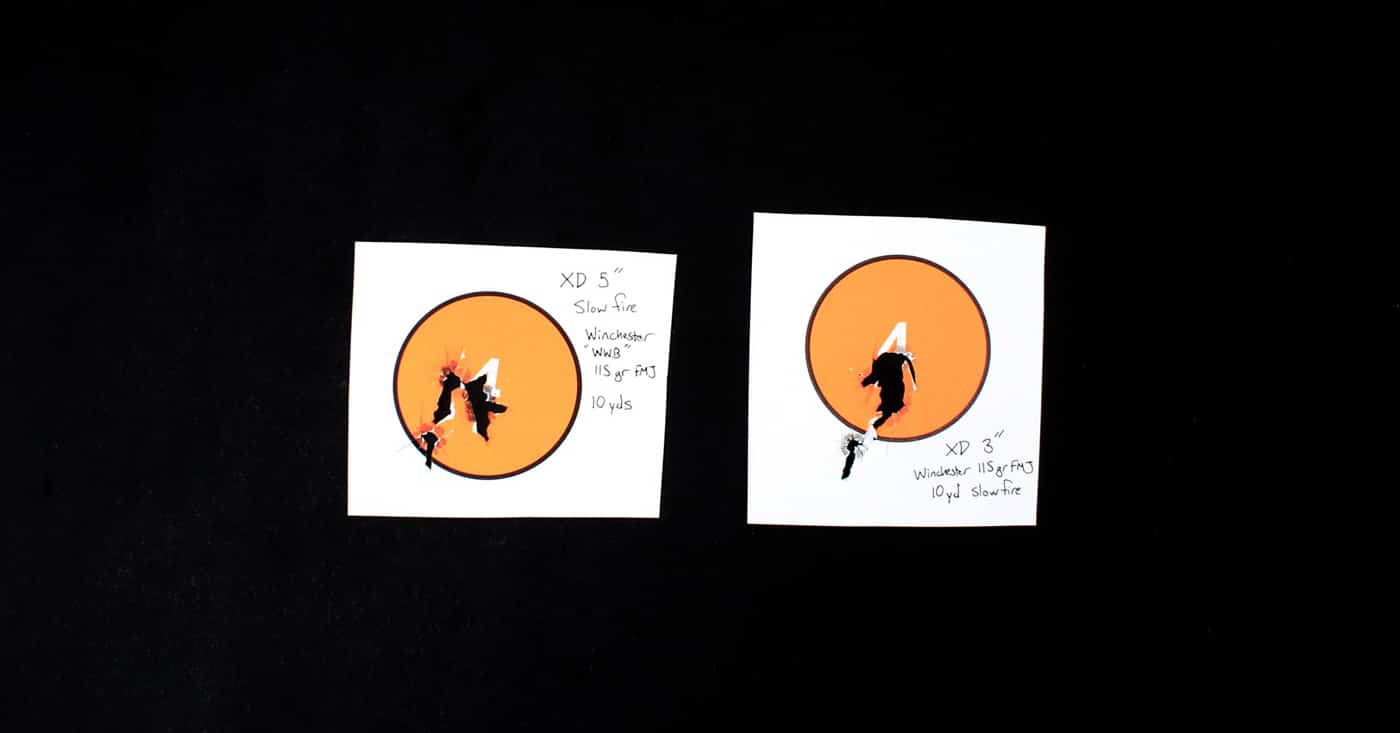
I began to wonder just how wide the gulf was between a full-sized gun and its CCW-sized little brother. To satisfy my curiosity, I decided to run a 5” Springfield XD next to a 3” Springfield XD to see what I could learn, especially as concerned the shootability of a small gun derived from a bigger platform.
The 5” XD Tactical
Even before a single round leaves the barrel, it’ll be evident to the experienced shooter that the 5” XD is a natural pointer. The gun is svelte and agile, and the long 7”+ sight radius greatly helps target acquisition. Bring the gun up to target, and it seems as though you’re magically looking through the sights.
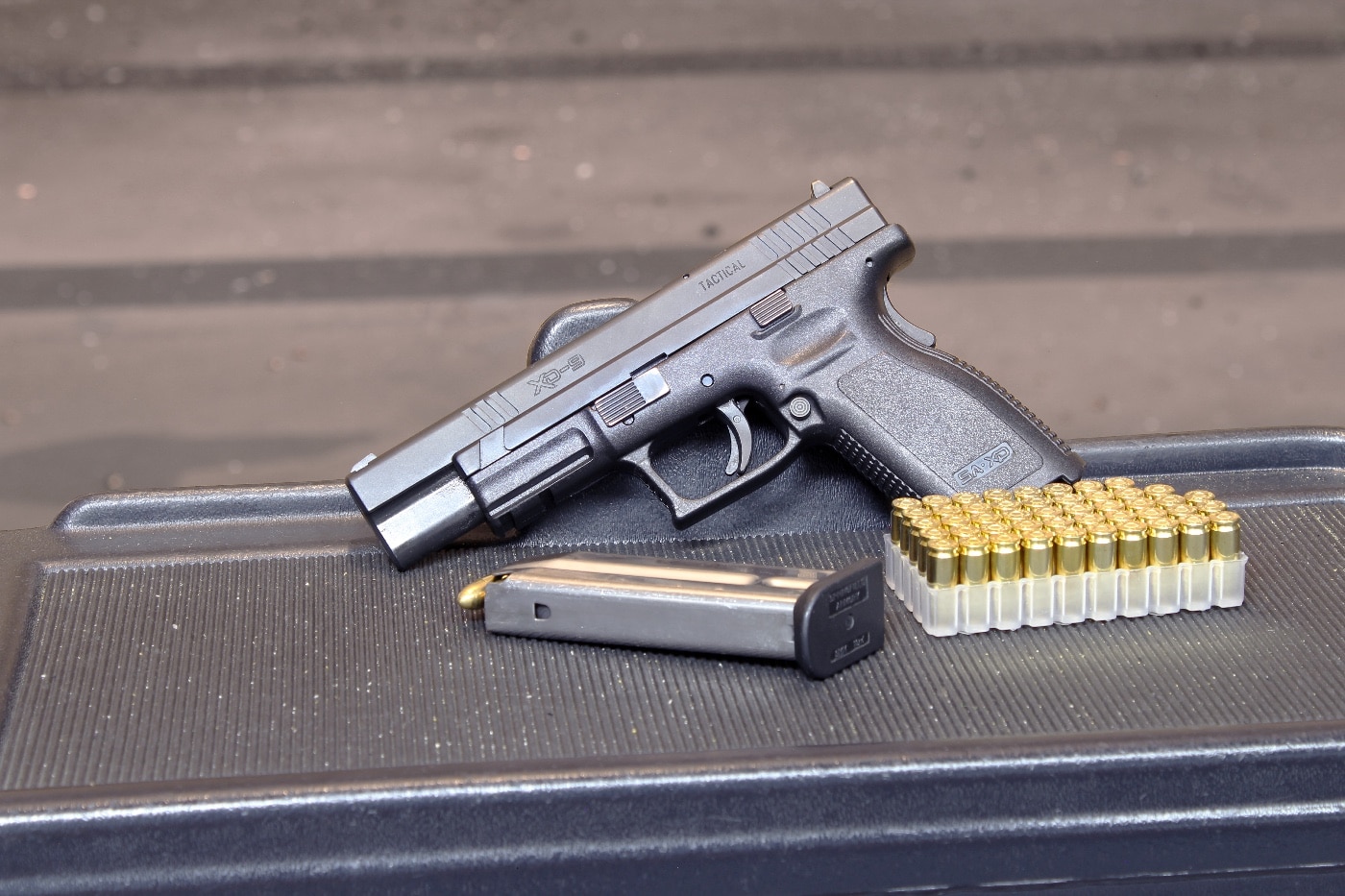
That said, the one area where I did notice an immediate difference between the two guns was in the weight of the slide: with more mass out at the front of the gun, the 5” XD seems to “hang” on the target more readily than its little brother.
That extra mass, initially, was a great benefit in rapid fire. I’m certainly no competition shooter, but it was fairly easy with the 5” XD to get my split times into the 0.30 second range and still keep a quick group at 7 yards within 4”. Here, the full-sized grip and good ergonomics of the XD platform overall were clear assets. With Winchester “white box” 9mm, which is about as textbook of a 115-gr. practice load as you can get, the muzzle rose up and came back down on target fairly predictably.
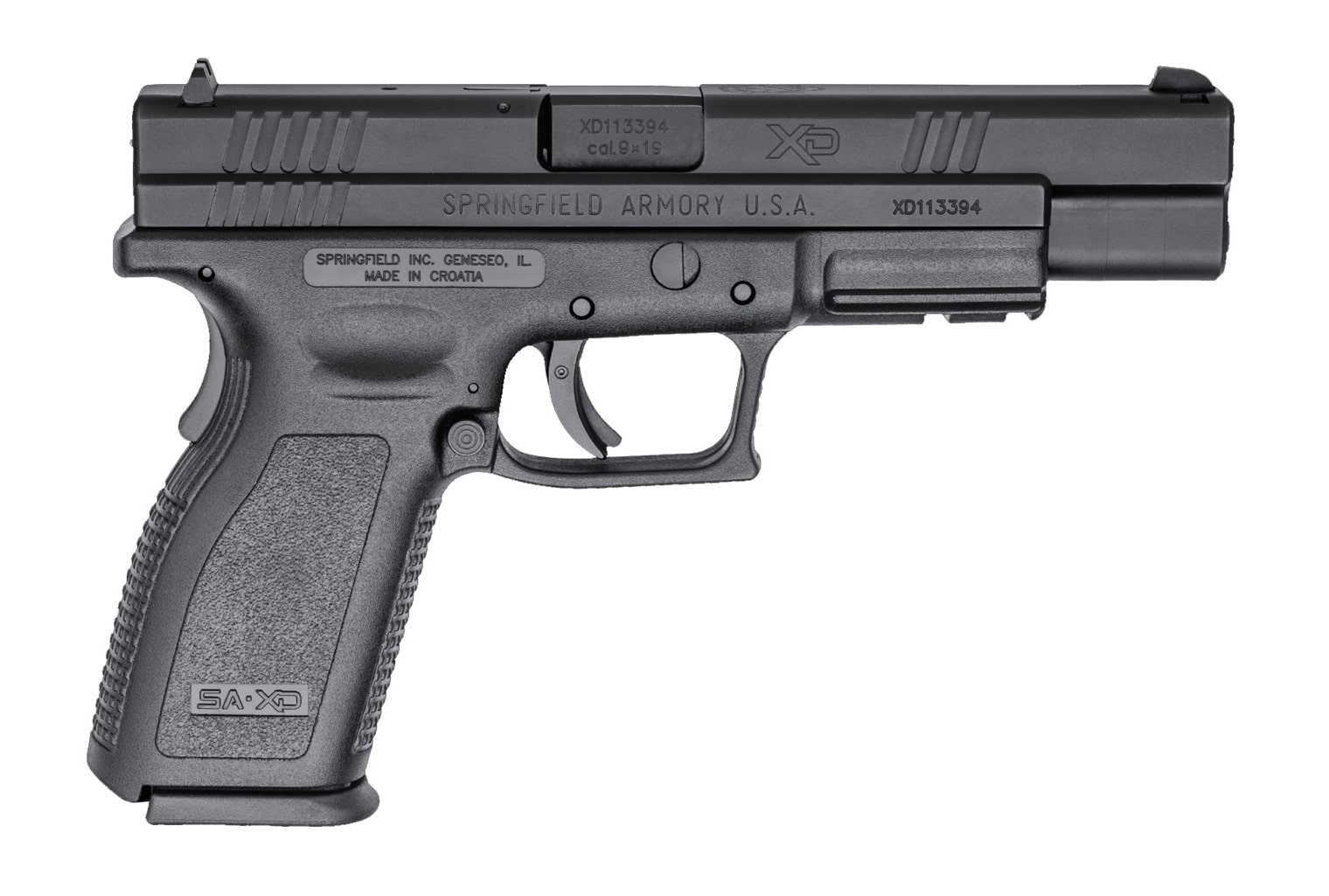
Naturally, the longer barrel will also give you a slight velocity boost — nothing earth-shattering, mind you, but it’s a palpable benefit worth mentioning. Others have done far more rigorous studies than I have across a variety of carry ammo — those wanting a great resource should check out a website called “Ballistics by the Inch” — but I can say that in general one can expect a velocity boost of about 100 to 150 fps from 5” of barrel as opposed to the same load shot through a 3” tube. As a result, the 5” gun, at least incrementally, will be flatter shooting and more equipped to realize full expansion of JHP ammo.
The 3” XD Subcompact
The eyeball test seems to indicate the 3” XD gives you a lot less to work with than its full-sized brother. Both in terms of barrel length and in terms of a rectangular, square inch “footprint,” the smaller XD is about 40% of the size of the 5” version.
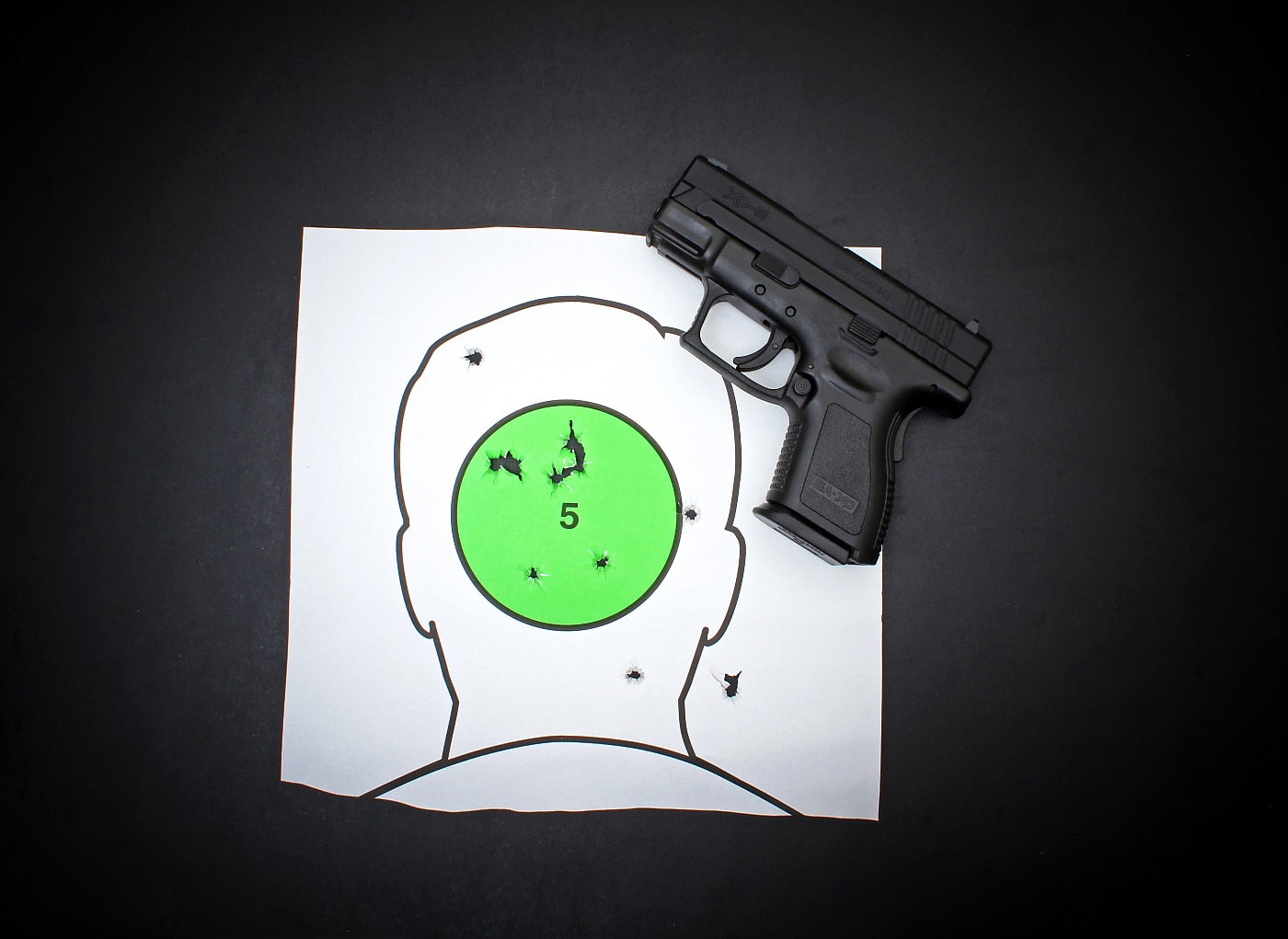
However, these figures don’t tell the whole story. The 3” XD is about 16% lighter than the 5” XD and still offers a relatively generous 5.3” of sight radius on a subcompact gun. That’s a lot of numbers to digest, but what it boils down to is a gun that’s functionally much smaller than the 5” gun, but doesn’t feel vastly different in the hand or on target.
Normally, I have to brace myself for stout, unpleasant recoil when I gear up to shoot guns tailor-made for concealed carry. I’m happy to report this wasn’t the case with the 3” XD. Recoil was slightly amplified over the 5” version, but overall the gun still handled very well.
I credit this to the dual-spring recoil system that goes into the smallest XD, as opposed to the single spring system in the 4” and 5” models. Naturally, there’s some debate here. Some shooters opine that simpler is always better: why use two parts to do a job that can be done with only one? To that I say — at least as far as the XD 3” goes — shoot it and you’ll see the light.
As compared to the larger XD, my split times weren’t tremendously different. I found that I was still running “failure to stop” drills on the 3” XD at roughly the same speed as I was with the 5” model. Under recoil, the gun seemed just as responsive and lively, which was a pleasant surprise.
The reduced sight radiusdid, however, make a difference in terms of the consistency I wanted. I often found that what looked like an acceptable sight picture resulted in an occasional flyer during my 7-yard drills, where I was trying to push the gun to get good hits as fast as my skills allowed. Nothing egregious, mind you, but every now and again what felt like an A-zone hit drifted into the B-zone.
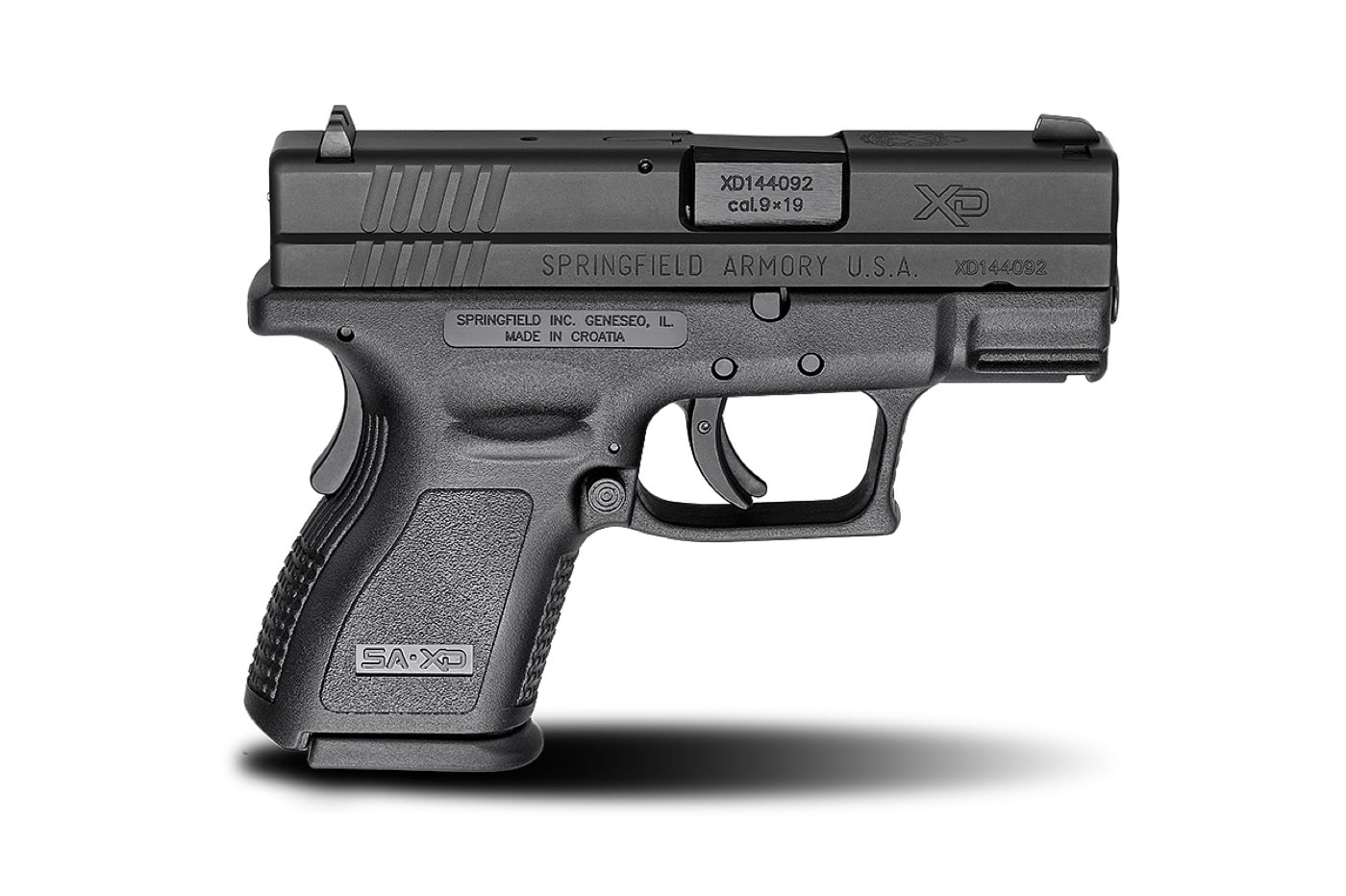
Similar results were found during a 50-foot “headshot” drill. From the low ready, I raised the gun and fired as quickly as I felt I had a “good enough” sight picture for the distances involved. Of the eleven rounds I shot on my last target, I had one miss, two fliers still good enough to land in the general “head” region, and the rest nicely clustered in a 3” circle.
Surprisingly, accuracy wasn’t much impeded when I took my time. Again, it’s a little more challenging on the 3” XD to precisely judge how much light you have on both sides of the front sight, but I was still impressed by the tiny groups I was getting. Even with the reduced dimensions, I can say this unequivocally: if you miss a half dollar-sized target within 10 yards, the fault is yours.
What Should you Pick?
Blanket recommendations are thorny, but here goes: if concealed carry isn’t a consideration or if you simply want to give yourself the best tool to stack rounds as possible, more sight radius and more mass are always positives. Although I think the 5” XD would demand some concessions most in the CCW crowd would be unwilling to make, this would make a superb firearm for home defense or as an entry-level competition gun.
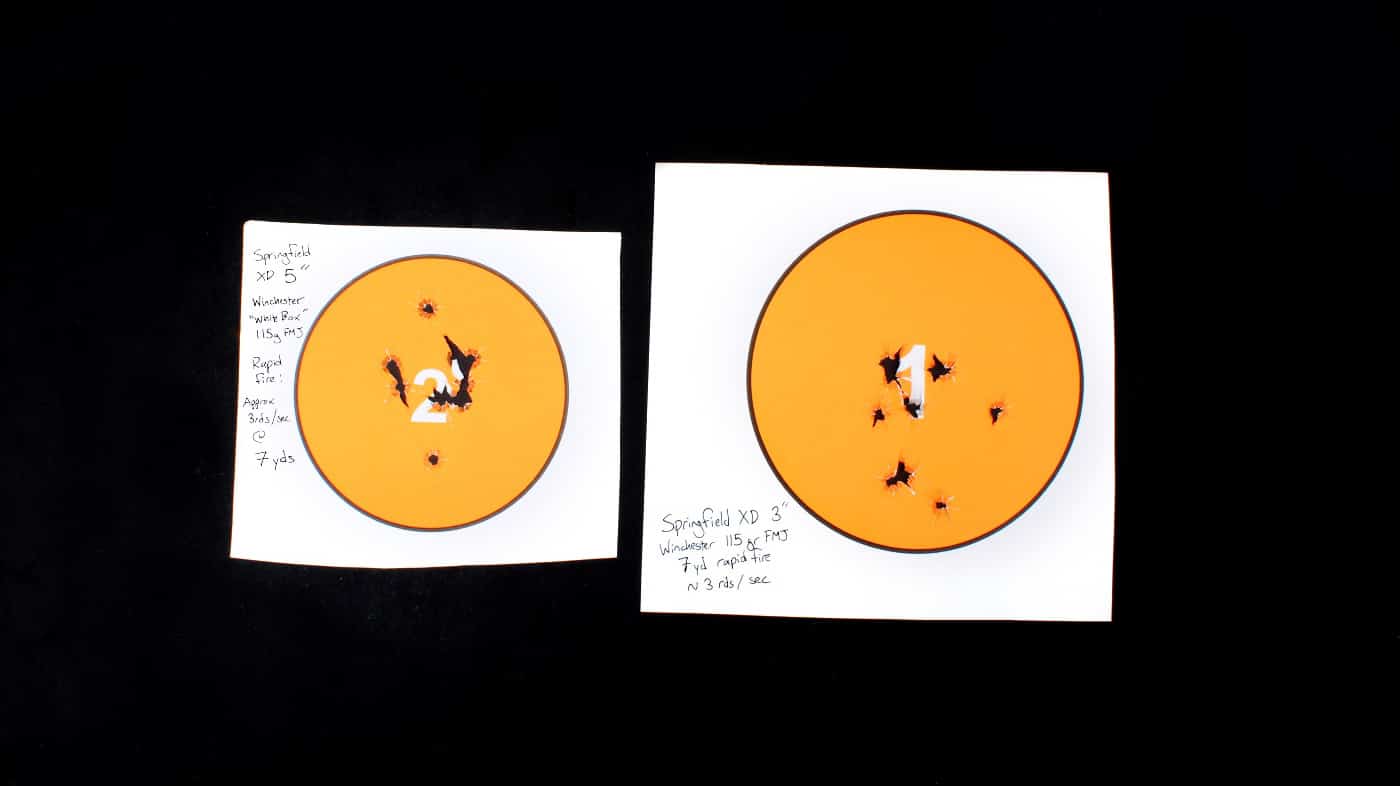
On the other hand, and as my “.mil” friends like to say, “ounces make pounds.” The 3” XD can be more easily stowed, packed, hidden and worn than its bigger brother, and as far as firearms go, context matters. Naturally, the abridged size of the 3” XD creates unavoidable trade-offs in terms of recoil control, sight radius, and overall pointability. But let me tell you — the 3” model doesn’t give up much.
Of course, Springfield Armory does indeed make a 4” XD. It splits the difference between the two models, but not perfectly cleanly — thanks to its full-sized grip, it’s a little closer in size and spirit to the biggest member of the XD family than it is to the smallest.
In the end, I found that in terms of the usual tropes associated with full-sized and sub-compact guns (i.e., the “belt anchor” and “mouse gun” dichotomy), they simply didn’t apply with this pistol family. If you fear the 5” XD is unwieldy or heavy, it most certainly isn’t. Practically, you’ll find that the extra mass and slide radius turns what might seem to be an “iffy” called shot into an acceptable hit. Not always, but often enough to matter.
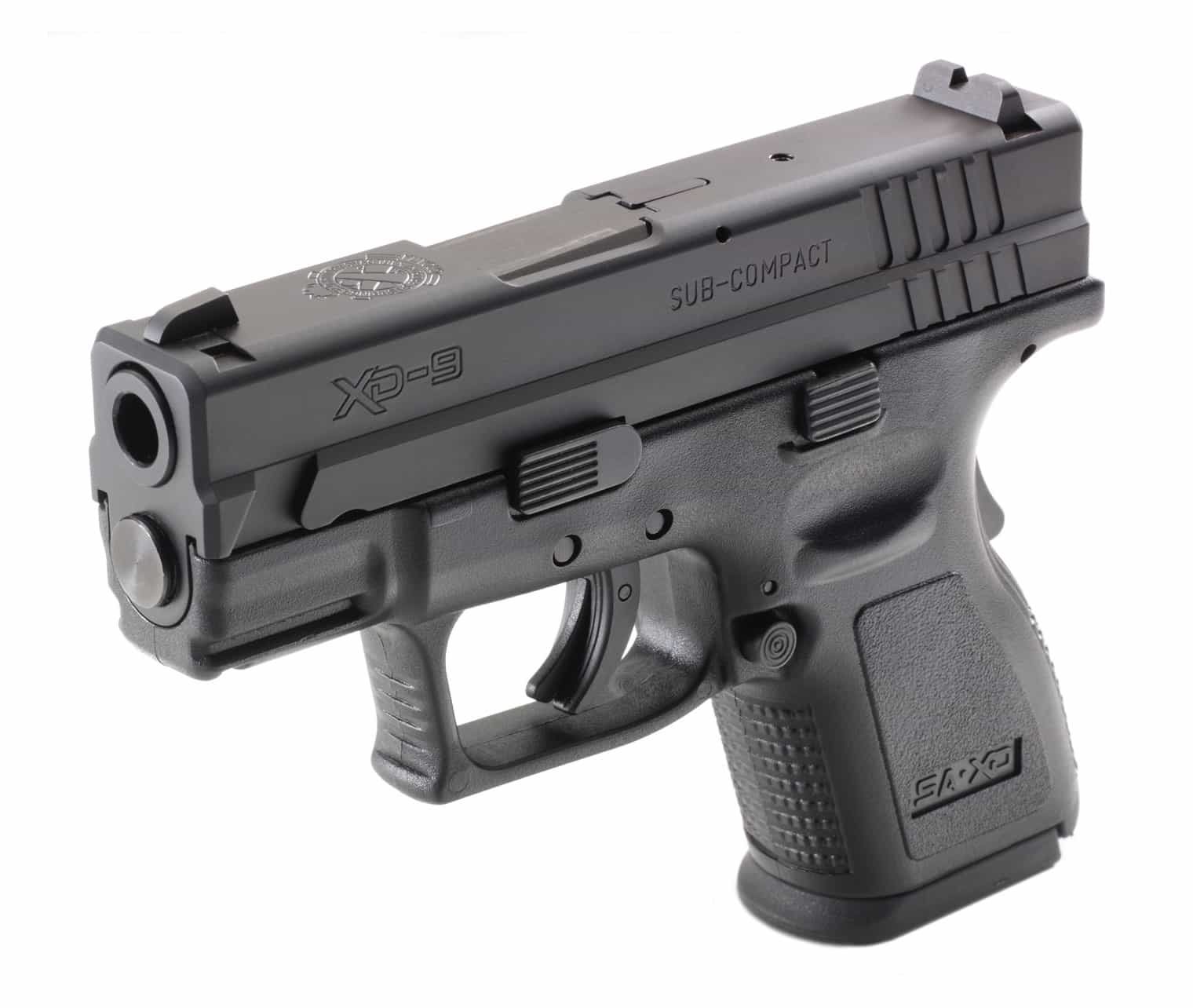
By the same token, if you doubt your ability to reach out and touch something with the 3” XD, let me assure you it’s more than up to the task (and truly, you’ll have fun running it). If there’s a drawback with the abbreviated dimensions on the sub-compact XD, it’s that it takes a little more time and effort to guarantee a round will center punch the target.
Conclusion
As a result of these admittedly informal tests, I don’t think there’s a bad choice to be made. Both of the models I tested were remarkably capable handguns equipped for a wide variety of roles, from the recreational to the deadly serious. And, if you were wondering, both ran like a top, with absolutely no hiccups or malfunctions across a few hundred rounds of testing.
At least as far as the XD models are concerned, rest assured that whatever size you pick: sub-compact, service, or tactical, the guns are far more alike than they are different. Consider me pleasantly surprised by that conclusion!
Editor’s Note: Please be sure to check out The Armory Life Forum, where you can comment about our daily articles, as well as just talk guns and gear. Click the “Go To Forum Thread” link below to jump in and discuss this article and much more!
Join the Discussion
Featured in this article
Continue Reading
Did you enjoy this article?

 344
344




